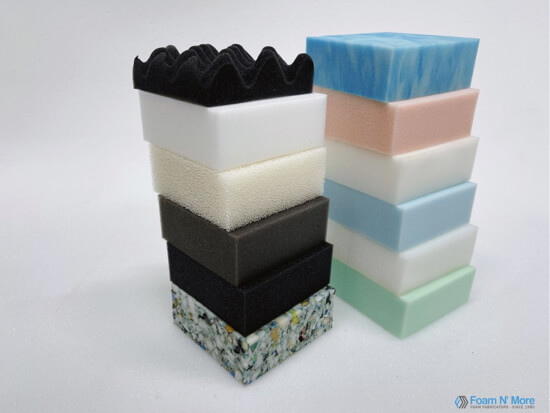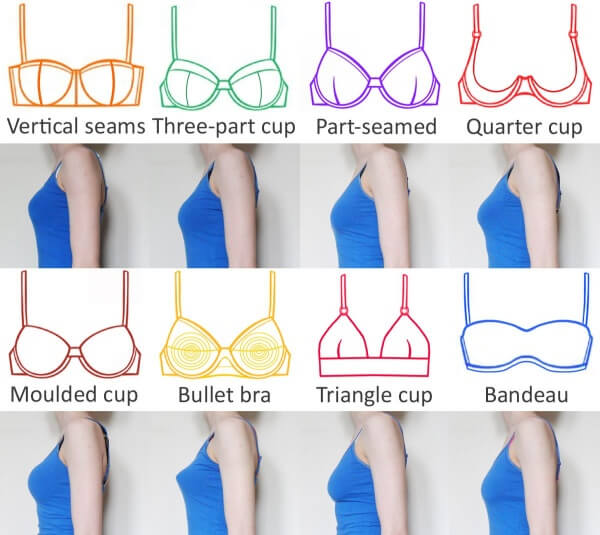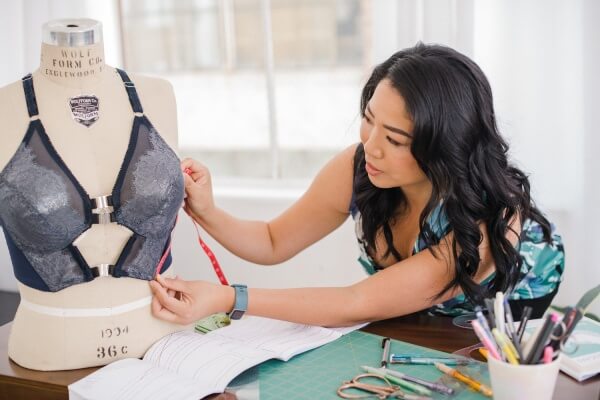The Secrets of Molded Cups: How Choices in Shape, Thickness & Material Impact Bust Shaping & Comfort
The lingerie industry faces a constant challenge: creating bras that combine perfect support with all-day comfort. Yet many brands struggle to understand how molded cup construction affects the final product's performance and consumer satisfaction.
Molded cups form the foundation of modern bra design, representing 80-90% of the overall bra market. Their seamless construction provides a natural configuration under clothing while offering versatility in softness levels, support, and design possibilities that significantly impact overall garment performance. 5
When developing a new bra line, cup selection is one of the most consequential decisions a brand will make. The right choice elevates a product from merely functional to truly exceptional, while the wrong one can doom even the most beautiful design to failure. At HAVING, we've seen how seemingly minor variations in cup construction dramatically impact consumer satisfaction, return rates, and brand loyalty.
How Are Different Molded Cup Types Constructed, and What Benefits Do They Offer?
Consumers frequently complain about bras that look appealing on the hanger but fail to provide the promised support or comfort during wear. This disconnect often stems from inappropriate cup selection for specific design goals.
Molded bras are created using specialized manufacturing processes that form three-dimensional cup shapes without seams, though some designs incorporate seams for enhanced support. Contour bras—a popular molded cup variation—feature a thin foam layer for modesty and nipple coverage and are commonly marketed as T-shirt bras when seamless. 3
The production of molded cups represents a significant technological advancement in lingerie manufacturing. The process begins with material selection and moves through precise molding techniques that determine the cup's final properties and performance characteristics.
| Cup Type | Construction Method | Key Benefits | Best For |
|---|---|---|---|
| Standard Molded | Heat-formed single material layer | Smooth appearance, consistent shape | Everyday wear, under fitted clothing |
| Contour/T-shirt | Thin foam layer for structure | Nipple coverage, moderate support | Office wear, light-colored tops |
| Push-up Molded | Graduated padding at cup bottom | Lift, enhanced cleavage | Special occasions, deep necklines |
| Seamed Molded | Molded cup with added seams | Enhanced support, structured shape | Fuller busts requiring extra support |
At HAVING, we've found that a successful molded cup begins with a clear understanding of the intended wearer's lifestyle and preferences. For active consumers, we prioritize cups that maintain shape through repeated movement and washing. For fashion-forward pieces, we might select cups that create more dramatic silhouettes while sacrificing some all-day comfort.
I remember developing a new sports bra line where we initially selected a standard molded cup. After wear testing, we discovered that the compression and movement during high-impact activities caused the cups to lose their shape prematurely. By switching to a specialized multi-density cup with targeted reinforcement, we extended the product's functional lifespan by 40% and dramatically improved customer satisfaction.
The thickness gradient across a cup dramatically impacts both shaping and comfort. While many brands focus exclusively on material type, we've found that strategic thickness variation—typically thicker at the wire line and gradually thinning toward the cup edge—creates the most natural-looking and comfortable results.
What Materials Are Commonly Used in Molded Cups and How Do They Affect Performance?
Many consumers struggle with discomfort from cups that either feel too rigid and unnatural or too soft and unsupportive. This common complaint often stems from inappropriate material selection for specific body types and support needs.
Three main types of foam materials dominate molded cup construction: spacer foam featuring a three-dimensional knit structure that enhances breathability, polyurethane foam which offers excellent shape retention and versatility, and memory foam which provides personalized contouring to the wearer's unique shape. 12

The molecular structure and physical properties of each material directly impact how the finished cup will perform in real-world wear situations. Material density, recovery rate, breathability, and durability are critical factors in the selection process.
| Material Type | Properties | Performance Benefits | Limitations |
|---|---|---|---|
| Spacer Foam | 3D knit structure with air pockets | Excellent breathability, lightweight | Less structured support, higher cost |
| Polyurethane Foam | Versatile in density, good recovery | Excellent shape retention, cost-effective | Less breathable, environmental concerns |
| Memory Foam | Temperature-responsive, contouring | Custom fit feeling, pressure distribution | Heat retention, slower recovery |
| Hybrid Constructions | Multiple materials in layers | Combined benefits of different materials | Manufacturing complexity, potential delamination |
In our factory at HAVING, we've developed a comprehensive material testing protocol that evaluates each foam type under simulated wear conditions. We test for shape retention after repeated compression, recovery speed, moisture wicking capability, and durability after washing. These objective measurements help us match materials to specific design requirements.
I remember working with a brand targeting the hot yoga market that initially selected a standard polyurethane foam for their cups. Despite the design looking perfect, early wear testing revealed significant comfort issues as the material retained heat and moisture during intense workouts. By switching to a specialized open-cell spacer foam with enhanced breathability, we transformed the product from a disappointment to a bestseller.
Material selection isn't merely about physical performance—sustainability considerations are increasingly important to consumers. Newer foam formulations incorporating bio-based components or recycled materials are gaining popularity, though they often require adaptations to traditional molding techniques. At HAVING, we've successfully implemented several eco-friendly foam options that maintain performance standards while reducing environmental impact.
How Does Cup Shape Influence Support and Aesthetic Outcomes?
Traditional bra designs often force consumers to choose between adequate support and appealing aesthetics. Many women express frustration with cups that either provide excellent support but look utilitarian or create a beautiful silhouette but fail during all-day wear.
Molded cups offer unprecedented design flexibility, allowing manufacturers to create various silhouettes from rounded to projected, full-coverage to demi styles. The seamless construction eliminates bulk while allowing for unlimited designs with customized support and softness levels. 345

Cup geometry significantly impacts both the physical support provided and the visual silhouette created. The distribution of material, angle of coverage, and bottom curve profile all interact to determine the final performance.
| Cup Shape | Silhouette Effect | Support Characteristics | Best For |
|---|---|---|---|
| Rounded | Spherical, even projection | Distributed support, natural look | Everyday wear, most breast shapes |
| Teardrop | Fuller at bottom, tapered at top | Bottom support, natural slope | Naturally bottom-heavy breast shapes |
| Push-up | Upward and inward projection | Bottom lift, center focus | Creating/enhancing cleavage, special occasions |
| Minimizer | Horizontal redistribution | Full coverage, compression | Reducing projected appearance under clothing |
At HAVING, we use 3D modeling and prototyping to visualize how different cup shapes will interact with various body types before committing to production tooling. This approach allows us to make precise adjustments to cup geometry that would be difficult to communicate through traditional technical drawings alone.
One challenging project involved developing a cup shape that provided support equivalent to a seamed construction while maintaining the smooth appearance of a molded cup. Through iterative prototyping and testing, we discovered that strategic reinforcement zones within the cup—created through variable thickness during molding—could create the support structure traditionally provided by seams.
The interaction between cup shape and foam thickness is particularly critical. A common mistake is applying uniform thickness across cups with different geometries. We've found that more projected cup shapes require graduated thickness to prevent collapsing at pressure points, while rounder shapes perform well with more consistent thickness distribution.
How to Select the Right Molded Cup for Your Brand's Target Customer?
Brands frequently invest in beautiful designs only to face disappointing sales and high return rates due to cups that don't align with their target customers' preferences and needs. This disconnect costs the industry millions annually in wasted development and unsold inventory.
The ideal cup selection process begins by understanding four key factors: the brand's aesthetic goals, target customer body types, primary wear occasions, and price positioning. These factors form the foundation for material selection and shape development that align with consumer expectations. 45

At HAVING, we've developed a systematic approach to cup selection that starts with these fundamental questions rather than jumping directly to material or shape preferences. This methodology consistently produces better outcomes.
| Brand Positioning | Recommended Cup Focus | Material Considerations |
|---|---|---|
| Everyday Comfort | Balanced support and softness, natural shapes | Medium-density spacer foam or flexible polyurethane |
| Fashion-Forward | Distinctive silhouettes, trend-aligned shaping | Higher-density polyurethane with precise shaping |
| Performance Focus | Technical construction, support-maximizing designs | Multi-layer constructions, reinforced zones |
| Luxury/Premium | Refined aesthetics, superior comfort | High-quality memory foam, premium spacer fabrics |
I've seen the impact of cup selection firsthand when working with a mass-market brand that was experiencing high return rates. Their customer feedback consistently mentioned discomfort and poor fit.
By analyzing the returns data, we identified a mismatch between their target demographic (primarily women with natural breast tissue that had softened with age or childbearing) and their cup selection (structured, firm polyurethane foam with minimal flexibility).
By transitioning to a more accommodating cup material with graduated thickness—thinner at the upper edge and thicker at the underwire channel—we created a more adaptable fit that worked with their customers' natural tissue. The return rate dropped by 23% within a single season.
What Manufacturing Parameters Most Impact Molded Cup Performance?
Many brands treat manufacturing specifications as secondary concerns, focusing primarily on aesthetic design. This oversight often leads to inconsistent product performance and quality control challenges that undermine consumer confidence.
The molding process parameters—particularly temperature and dwell time—significantly impact the final properties of molded cups. Studies analyzing different polyurethane foam samples have demonstrated that optimal molding conditions vary considerably based on the thermal-mechanical properties of specific materials. 23
At HAVING, we consider manufacturing parameters to be equally important to material selection in determining final cup performance. Our approach integrates material science with production engineering to optimize results.
| Manufacturing Parameter | Impact on Cup Performance | Optimization Strategy |
|---|---|---|
| Molding Temperature | Affects foam softness, recovery, and durability | Material-specific testing to determine optimal range |
| Dwell Time | Determines completeness of forming and heat distribution | Balance between efficiency and complete forming |
| Mold Gap | Controls compression level and thickness consistency | Precision tooling with regular calibration |
| Cooling Protocol | Influences dimensional stability and shape memory | Controlled cooling environment with consistent timing |
The transfer of heat through polyurethane foam during the molding process is a critical factor that determines cup quality. The mold gap, temperature, and dwell time together determine how effectively heat conducts through the material, directly affecting the final cup's properties. 4
In our manufacturing experience at HAVING, we've observed that polyurethane foam—the most widely used material in bra cup production—responds differently to molding parameters based on its specific molecular structure. 1
The chemical composition of the foam affects how it softens, flows, and sets during the molding process, creating either a permanent and stable shape or one that will gradually revert toward its original form.
Our technical team regularly conducts experiments using different foam samples molded at varying temperatures and times, measuring the resulting cup depth and properties to optimize parameters for each material type. 2 This scientific approach has allowed us to develop precise molding protocols that maximize each material's potential rather than using generalized settings.
One particularly challenging project involved a specialty foam with excellent comfort properties but unpredictable molding behavior. Through systematic testing, we discovered that the material required a two-stage temperature profile—starting higher to activate the molecular changes, then reducing to a specific lower temperature during the dwell period—to achieve consistent results. This insight transformed a problematic material into a reliable component for high-performance bras.
What Innovations Are Shaping the Future of Molded Cup Technology?
The bra industry tends to stick with established cup construction methods despite material and manufacturing advancements in other fields. This resistance to innovation limits the potential improvements in fit, comfort, and sustainability that could benefit consumers.
Recent innovations in molded cup technology include the exploration of auxetic materials with negative Poisson's ratio properties that create uniquely form-fitting deformation patterns. Researchers have also developed methods to produce bra cups from yarn in a single manufacturing step, potentially improving sustainability in intimate apparel production. 5
At HAVING, we're actively investing in next-generation cup technologies that address both performance and environmental concerns. Our R&D initiatives focus on three primary areas: material science, manufacturing process improvements, and digitalization.
| Innovation Category | Technology Focus | Consumer Benefit |
|---|---|---|
| Material Science | Bio-based foams, recycled content, auxetic structures | Improved sustainability, adaptive fit |
| Manufacturing Process | Single-step forming, reduced energy consumption | Lower environmental impact, cost efficiency |
| Digital Integration | 3D body scanning, personalized cup geometry | Custom fit, reduced returns |
| Smart Materials | Temperature-responsive, moisture-managing structures | Enhanced comfort in varying conditions |
The manufacturing process of molded bra cups remains complex and time-consuming due to the variety of cup sizes, styles, and material properties that must be accommodated. 5 This complexity presents both a challenge and an opportunity for innovation. By developing more efficient processes, we can reduce resource consumption while improving product consistency.
We're particularly excited about recent work with auxetic materials that display negative Poisson's ratio properties. Unlike conventional materials that thin when stretched, auxetic structures expand laterally when pulled lengthwise. This counter-intuitive behavior creates cups that can better conform to individual body shapes and movements, potentially accommodating different breast sizes with a single design. 5
Another promising direction is the development of one-step production methods that create cups directly from yarn. Early studies show the feasibility of this approach, which could significantly reduce waste and energy consumption in manufacturing. 5
At HAVING, we're currently piloting similar technology that eliminates several production steps while maintaining structural integrity.
Conclusion
Selecting the right molded cup is a critical decision that impacts comfort, aesthetics, support, and durability. By understanding material properties, shape considerations, manufacturing parameters, and emerging innovations, brands can make informed choices that align with their target consumers' needs and preferences.
Frequently Asked Questions (FAQ)
What is the difference between molded cups and cut-and-sew cups?
Molded cups are formed using heat and pressure to create a seamless, three-dimensional shape from a single piece of material. Cut-and-sew cups are constructed by cutting fabric pieces and sewing them together to create the cup shape. Molded cups generally offer a smoother look under clothing but may provide less customized support than seamed cups.
Are molded cup bras suitable for all breast shapes?
While molded cups work well for many breast shapes, they're most compatible with breasts that naturally match the cup's predetermined shape. Those with very asymmetrical breasts, very soft tissue, or very projected shapes may find that molded cups create fit issues since the rigid pre-formed shape doesn't adapt to their natural contours.
How should I care for bras with molded cups to maintain their shape?
To preserve the shape of molded cups, store them with the cups stacked together (not folded or inverted), wash in a lingerie bag on gentle cycle or by hand, and avoid wringing or twisting. Allow them to air dry naturally, as heat from dryers can damage the foam structure and alter the cup shape permanently.
What innovations are making molded cups more sustainable?
Emerging sustainable innovations include bio-based foam alternatives derived from plant sources, recycled polyester spacer fabrics, manufacturing processes that reduce energy and water usage, and designs that facilitate end-of-life recycling by using mono-materials throughout the cup construction.
How do I know if a molded cup bra fits me correctly?
A properly fitting molded cup should completely encase your breast tissue without gaps at the top or sides. The center gore should lie flat against your sternum, and the underwire should follow your breast root without pinching or sitting on breast tissue. If you notice empty space in the cups or overflow at the edges, you likely need a different size or cup shape.
Get a Free Quote for Your Underwear Projects
